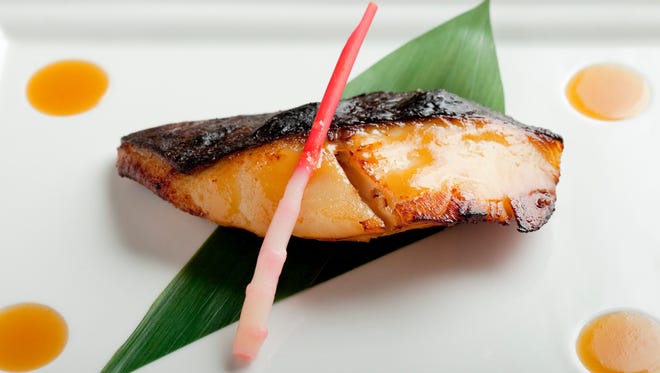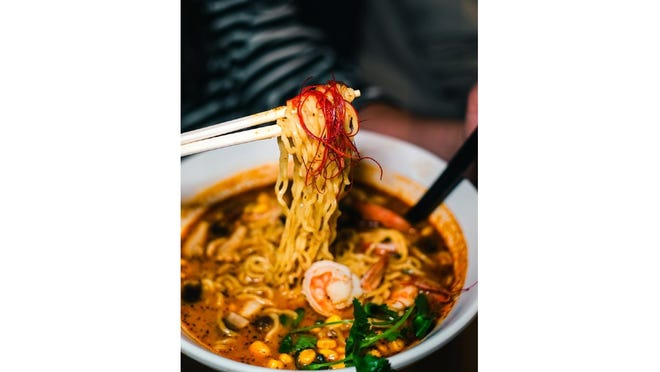[ad_1]
Japanese cuisine is full of flavor, including the fifth taste “umami.” The term translates “essence of deliciousness” in Japanese, with the taste providing a mouthwatering sensation and lasting longer than the other basic tastes, according to Ajinomoto.
From ramen to teriyaki, Japanese foods contain umami flavors which is quite often the result of mirin. You probably have had mirin without even knowing it.
Mirin brings a tang and sweetness to the dishes it is in. But what exactly is mirin? Here’s what you need to know about the common ingredient used in Japanese cooking.

What is okonomiyaki? Get to know the Japanese food
Just Curious: We’re here to answer your everyday questions.
What is mirin?
According to Kikkoman, mirin is a rice wine used as a seasoning or consumed as a beverage in Japanese cuisine. It is a sweet liquor containing about 14% alcohol content and 40 to 50% sugar content. In comparison, sake has roughly 15 to 16% alcohol by volume.
Mirin is made of glutinous rice, rice koji (fermentation starter) and shochu distilled liquor and its maturation process takes one to two months. The glutinous rice is steamed then mixed with the rice koji and distilled liquor. Once the mixture is fully fermented, it is pressed, heated and finally filtered. The final product is mirin which has a light golden color and thicker consistency than sake.
The liquid is often used to add sweetness and savoriness in many Japanese dishes such as noodle soup bases and sauces and marinades.
Are all mirin the same?
There are three common types of mirin:
- Hon mirin: also called “true mirin,” is known for its high alcohol content (around 14%) and 0% salt content. This type of mirin can be used for drinking or cooking.
- Shio mirin: also called “salt mirin,” has at least 1.5% salt content added after the fermentation process. This is done to avoid the alcohol tax placed on beverages in Japan. Shio mirin is not meant to be drunk but can still be used in cooking.
- Shin mirin: also called “new mirin,” is similar to the taste of hon mirin but contains less than 1% of alcohol.
Perfect pairings: Sake and whisky to pair with Japanese fare
What does mirin taste like?
Mirin has a sweet and tangy flavor. Unlike sake, mirin has a thicker, almost syrup-like, consistency. The ingredient’s taste brings in umami due to its fermentation process.

Photo gallery: A ramen restaurant in each state
What can I use instead of mirin?
If you are making a recipe and do not have any mirin on hand here are some alternatives you can use instead:
- White wine vinegar
- Rice wine vinegar
- Sake
- Dry sherry
- White wine
From sushi to tofu: What foods are eaten in the Japanese diet?
[ad_2]

